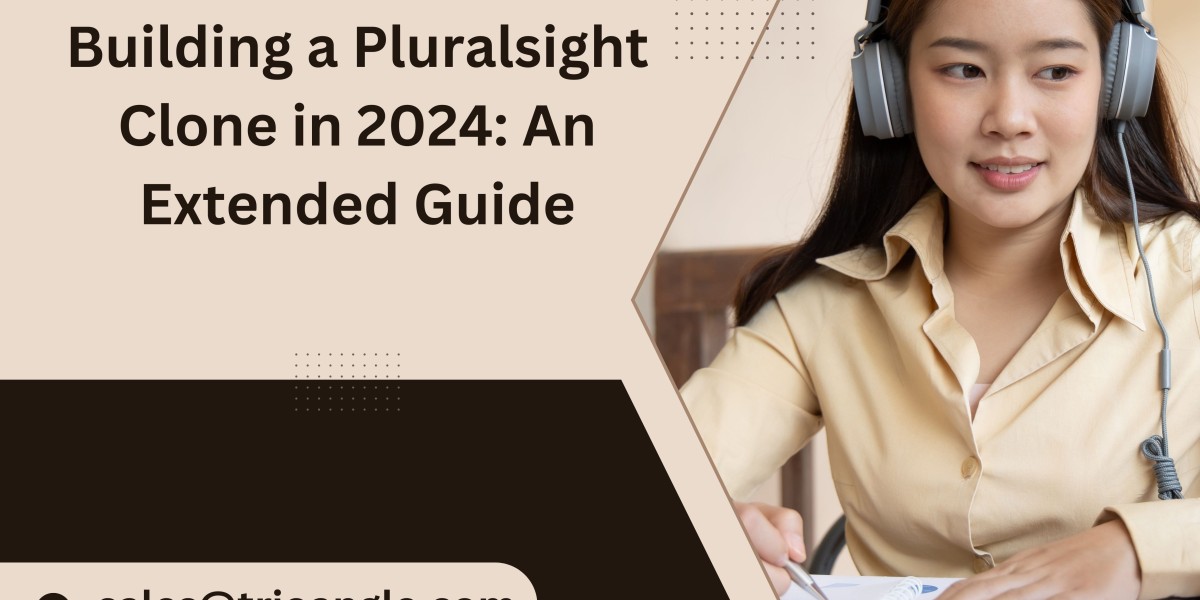Continuous learning is more important than ever in today's rapidly evolving tech era.
Online learning platforms like Pluralsight have become invaluable resources for professionals seeking to stay ahead.
For knowledge institutions, individual tutors, and entrepreneurs, creating a Pluralsight clone offers a lucrative opportunity to tap into the growing demand for e-learning.
This complete guide will walk you through the essential steps to build a successful Pluralsight clone in 2024.
Continue learning…
Knowing the Core Features of the Pluralsight App
Before diving straight into the app development part, it's crucial to understand what makes Pluralsight so effective. Key features include:
1. Vast Course Library: Pluralsight offers a wide range of courses across various tech disciplines.
2. Skill Assessment: The platform provides tools to evaluate learner’s skills and recommend appropriate courses.
3. Learning Paths: Pluralsight recommends sequential courses for learners to master a particular subject.
4. Interactive Learning: Quizzes, coding challenges, and interactive labs enhance the learning experience.
5. Certificates of Completion: Learners receive certificates upon course completion, adding value to their professional profiles.
Step-by-Step Pluralsight Clone Development Guide
1. Demand Analysis and Business Planning
Conduct thorough market research to understand your target audience and competitors. Identify gaps in the market. Define your unique selling proposition (USP). Plan your project scope, budget, and timeline in advance.
2. Choosing the Right Technology Stack
Selecting the appropriate technology stack is critical for building a robust e-learning platform like Pluralsight. For creating a Pluralsight clone, consider the following:
Frontend: React or Angular for a responsive and dynamic user interface.
Backend: Node.js or Django for server-side operations.
Database: PostgreSQL or MongoDB for managing course data and user information.
Cloud Services: AWS or Google Cloud for platform hosting and scalability.
Video Streaming: Implement streaming services using platforms like Vimeo or AWS S3.
3. Designing the User Experience
Focus on creating an intuitive and user-friendly interface. Hire experienced UX/UI designers to map out user journeys, ensuring ease of navigation and accessibility. Key design elements include:
Homepage: Engaging and informative, highlighting popular courses and features.
Course Pages: Detailed course descriptions, instructor information, and user reviews.
Interactive Elements: Quizzes, coding environments, and discussion forums.
4. Designing Core Features
Begin with the essential features at first and build advanced ones later on. Prioritize the following:
Course Management: Admin panel for instructors to upload and manage course content.
User Authentication: Enable secure registration and login systems for both tutors and learners.
Payment Gateway Integration: Support multiple payment options for smoother transactions.
Content Delivery Network (CDN): Optimize video delivery and reduce latency for a seamless learning experience.
5. Implementing Skill Assessment Tools
One of Pluralsight's standout features is its skill assessment tool. Develop a similar system to evaluate users' knowledge and recommend suitable courses. Use algorithms to analyze quiz results and provide personalized learning paths.
6. Testing and Quality Assurance
Rigorous testing is crucial to ensure the platform works well without any bugs or issues. Conduct various tests, including:
Unit Testing: Verify individual components function correctly.
Integration Testing: Ensure different modules work together seamlessly.
User Acceptance Testing (UAT): Gather feedback from real users to identify areas for improvement.
7. Launch and Marketing
Prepare for the launch once Pluralsight clone app development and testing are complete. Develop a comprehensive marketing strategy to attract your target audience. To drive traffic to your platform, utilize;
Search Engine Optimization (SEO),
Content marketing,
Social media, and
Influencer partnerships.
Conclusion
Creating a Pluralsight clone requires meticulous planning, technical expertise, and a deep understanding of the e-learning market. By focusing on delivering a high-quality, user-centric platform, you can build a successful online learning business that meets the needs of modern professionals.








